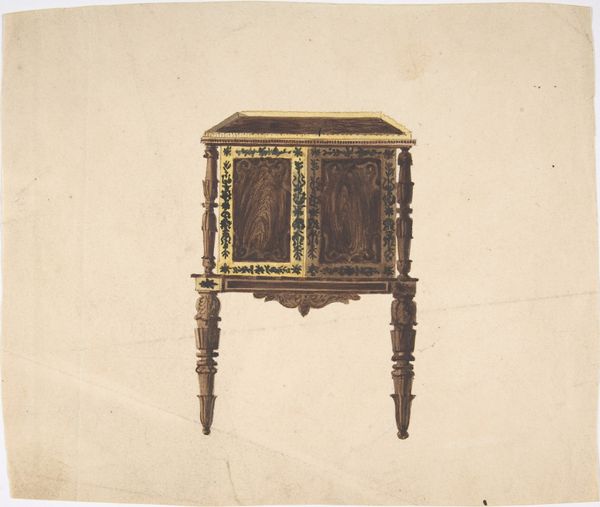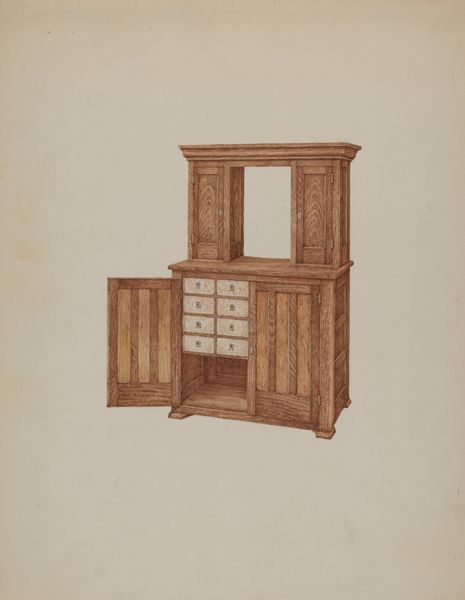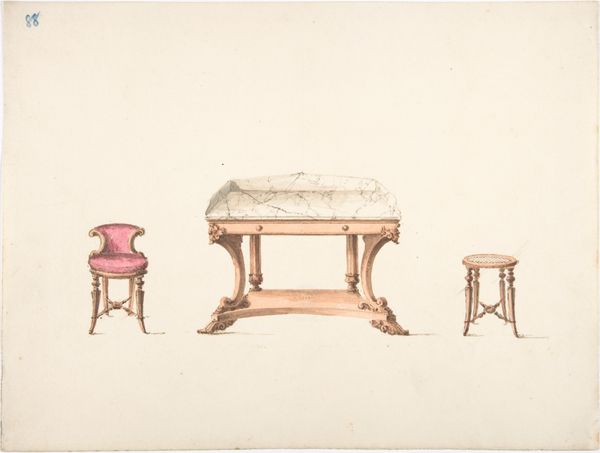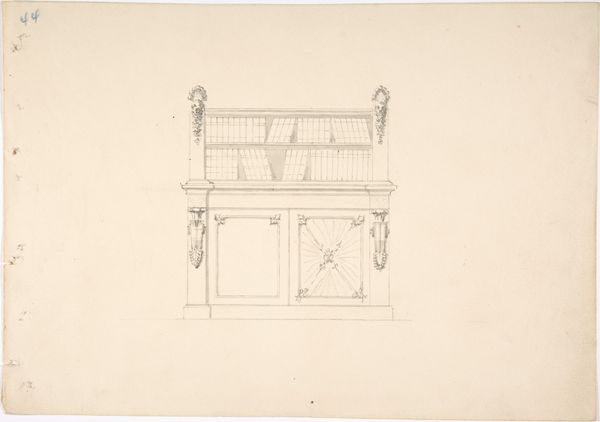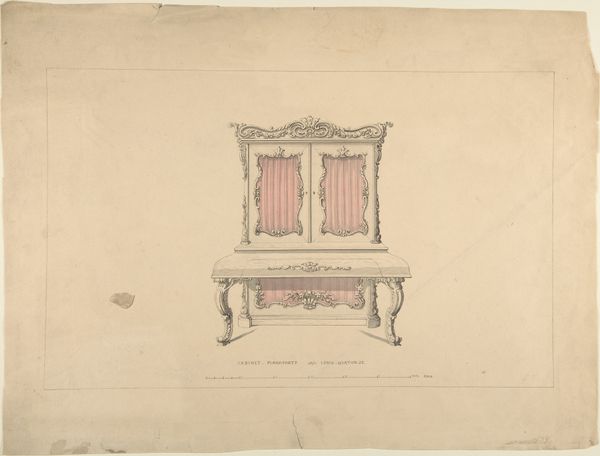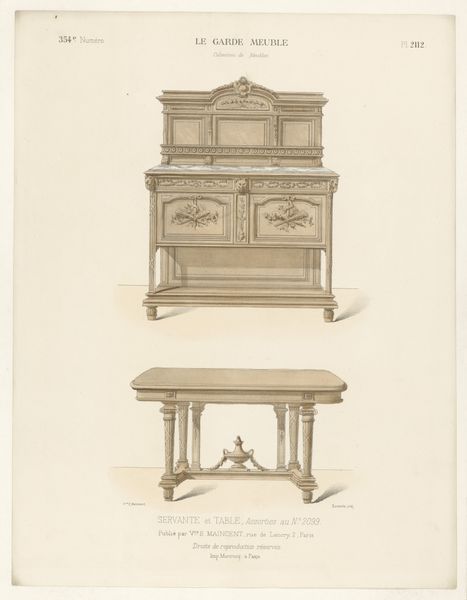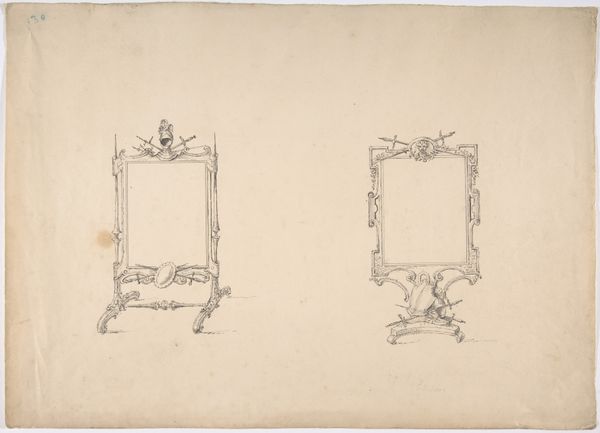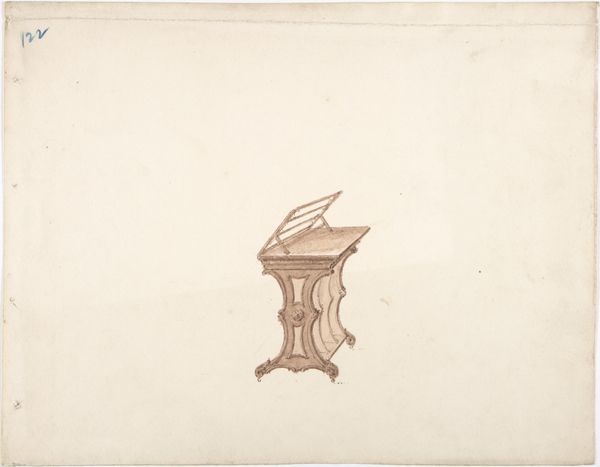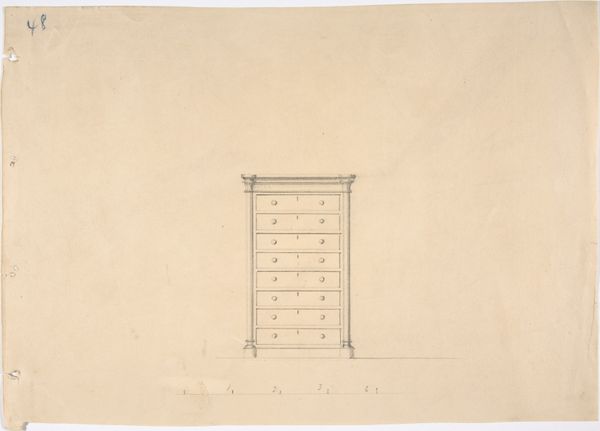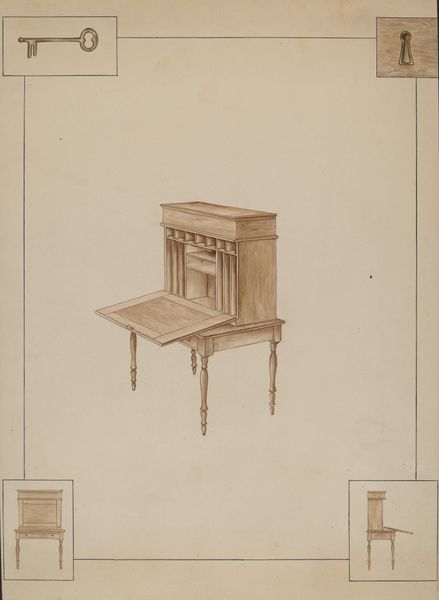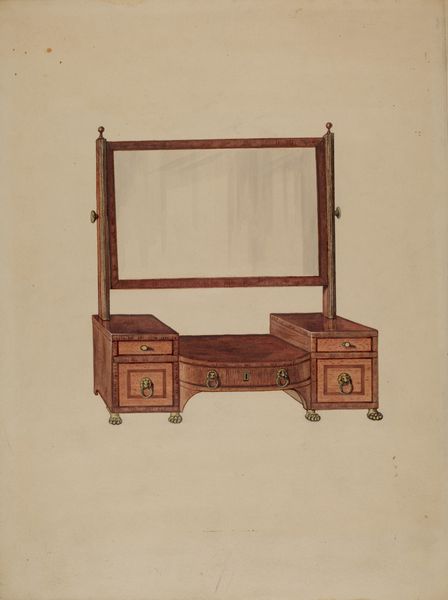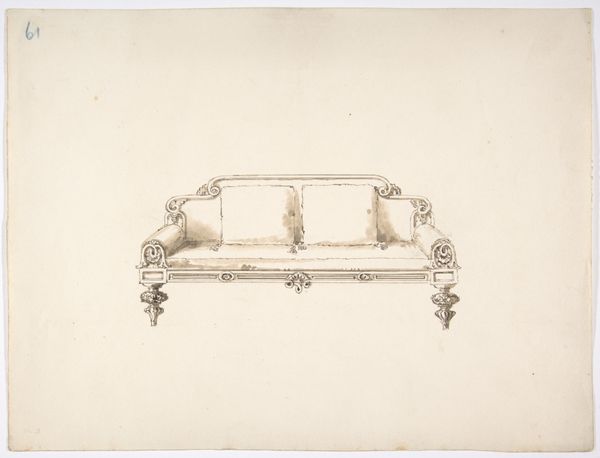
Design for a Two-sided Bookstand with Shelves (Verso: sketch) 1800 - 1850
0:00
0:00
drawing, print, paper, watercolor, ink, pencil
#
drawing
#
neoclacissism
# print
#
pencil sketch
#
paper
#
watercolor
#
ink
#
pencil
#
watercolour illustration
Dimensions: sheet: 9 5/16 x 11 13/16 in. (23.7 x 30 cm)
Copyright: Public Domain
Curator: Let's turn our attention to this delicate watercolor and ink drawing, "Design for a Two-sided Bookstand with Shelves," dating from 1800 to 1850. The artist is, unfortunately, unknown. Editor: My immediate feeling is one of restrained elegance. The bookstand seems almost like a miniature temple. I'm particularly drawn to the airy structure on top – it's so light. Curator: That lightness, I think, speaks to its era. The Neoclassical period was all about rationality and order. Think about the social and political upheavals of the time, the revolutions calling for reason, for democratic thought, disseminated through texts and pamphlets – the bookstand, a piece of furniture holding those vehicles of liberation and reason. Editor: I see that – it reminds me of reliquaries I've seen. The upper part, specifically. Perhaps it suggests the reverence with which knowledge and the written word were held, particularly during that period? Or it could reflect the evolving ways the concept of religion itself was undergoing during that time? Curator: Precisely! Also, think about who might have commissioned such a piece. Literacy was still relatively limited; the design suggests wealth, leisure, and access to knowledge, implying certain class and gender dynamics. I wonder, were books also seen as status symbols, particularly for women finding their voices? Editor: Interesting. And if we consider the actual design - the symmetrical curves, the ascending openwork at the top -- this echoes earlier gothic styles, giving them a classical and intellectual update. Curator: Definitely, you're also speaking to how Neoclassicism also often reimagined earlier aesthetic approaches for its purposes. The piece hints at an ongoing conversation with the past, where knowledge of history provides grounding in how a present should function, look, or feel. Editor: It makes you consider what symbols we are imbuing objects with today… and who gets access to them. Curator: Exactly. A reminder that the things we surround ourselves with always have their own histories and say a lot about the values of any era.
Comments
No comments
Be the first to comment and join the conversation on the ultimate creative platform.
